If you’re like most homeowners, you may not think about your range hood until it’s time to install it. But if your home has a vaulted ceiling, there are some special considerations you’ll need to take into account. In this post, we’ll show you how to install range hood on vaulted ceiling and share some tips for making the process go smoothly.
Installing a range hood on a vaulted ceiling can be a daunting task. However, with the right instructions, it can be done relatively easily. However, before you begin any installation, you’ll want to make sure that the area around the range hood is clear and free of any obstacles. Read on for more tips and advice on how to install your new range hood!
What is a Vaulted Ceiling?
A vaulted ceiling is a type of ceiling that has one or more sides inclined upwards, forming an angle at the top. This design adds height and depth to a room, creating an open and airy feel. Many modern homes feature vaulted ceilings in various rooms, including the kitchen. However, this unique ceiling design can make installing a range hood a bit more challenging.
How Do You Mount a Range Hood on a Vaulted Ceiling?
There are a few different ways that you can mount a range hood on a vaulted ceiling. One option is to use two-by-fours or other similar lumber to create a frame around the hood. Another option is to use metal straps that are screwed into the ceiling joists.
You will need to make sure that the straps are long enough so that they can be wrapped around the range hood and then secured. Whichever method you choose, make sure that the range hood is securely mounted so that it does not come loose and fall while in use.
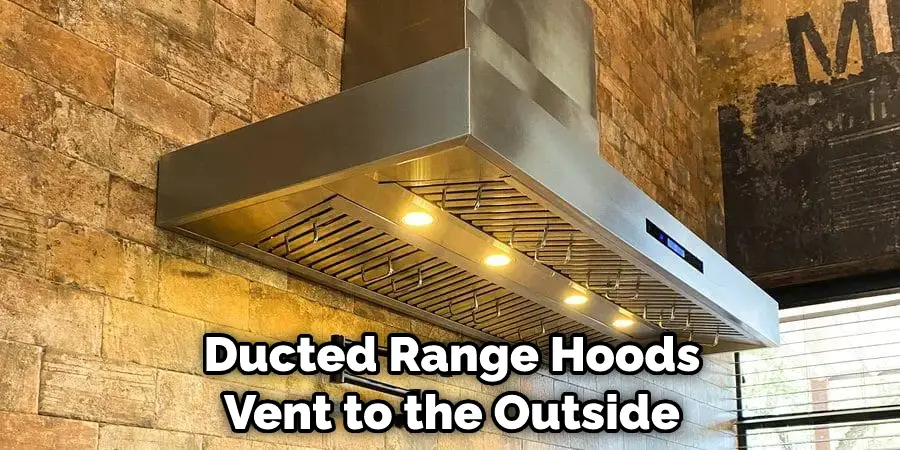
Tools and Materials You’ll Need
Before you get started, make sure you have all the necessary tools and materials for installing a range hood on your vaulted ceiling. Here’s what you’ll need:
Range Hood Unit:
You can choose from a variety of range hood units that are suitable for vaulted ceilings. Make sure to measure the dimensions of your space and choose a unit that will fit comfortably.
Two-by-fours or Metal Straps:
As mentioned, these will be used to create a frame or secure the range hood to the ceiling joists.
Power Drill:
A power drill will come in handy for drilling holes and securing screws.
Stud Finder:
This tool will help you locate the ceiling joists for secure installation.
Measuring Tape:
You’ll need to measure the dimensions of your range hood and space to ensure proper placement and fit.
Screwdriver:
A screwdriver will be used to tighten the screws and secure the range hood in place.
10 Effective Ways How to Install Range Hood on Vaulted Ceiling
1. Choose the Right Range Hood Size:
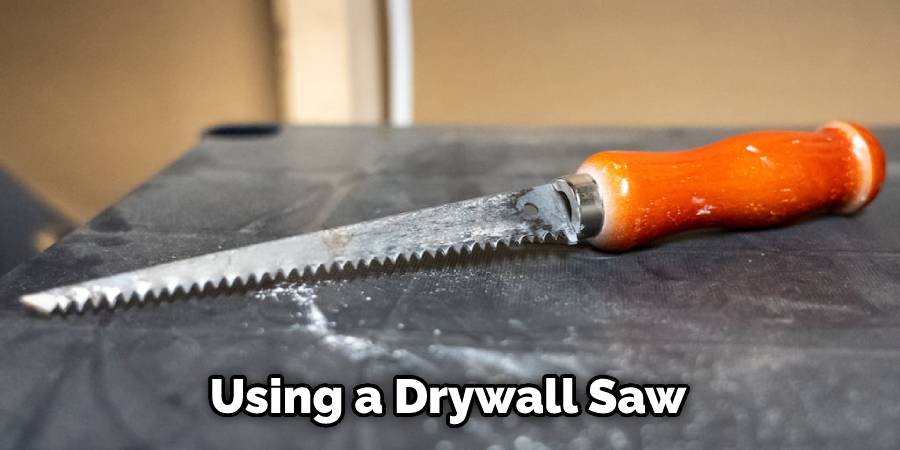
The first step is to choose the right size range hood. You’ll need to measure the width of your stove and the height of your ceiling. The width of the range hood should be at least as wide as the stove, and the height should be at least 2 feet taller than the stove. This will ensure proper ventilation and coverage. The size of the range hood will also determine the size of the frame or straps needed for installation.
2. Determine the Type of Range Hood You Need:
There are two types of range hoods: ducted and ductless. Ducted range hoods vent to the outside, while ductless range hoods recirculate the air back into the kitchen. If you have a ducted system in your home, you’ll need to install a ducted range hood. If you don’t have a ducted system, you can either install a ductless range hood or have a professional install a ducted system for you.
3. Choose a Location for the Range Hood :
The next step is to choose a location for the range hood. It’s important to choose a location that’s close to an exterior wall so that you can vent the exhaust outside. You’ll also want to make sure that there’s enough clearance around the perimeter of the range hood so that it doesn’t impede on any doors or windows.
4. Mark the Location of the Range Hood :
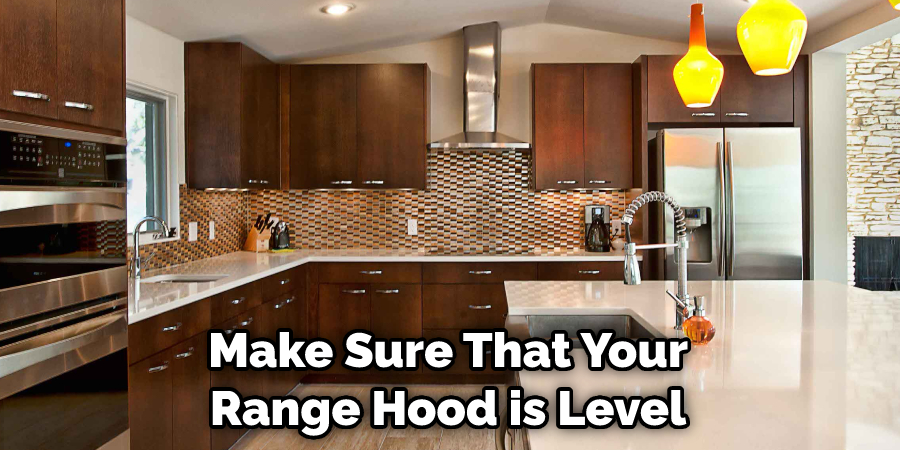
Once you’ve chosen a location for the range hood, use a pencil or chalk to mark the location on the ceiling. Make sure that you’re using a level so that your marks are straight. If you’re installing a ducted range hood, you’ll also need to mark the location of the vent hole on the exterior wall.
5. Cut a Hole for the Range Hood :
Using a drywall saw, cut out the hole for the range hood. Be careful not to cut too big of a hole, as you’ll want there to be a tight seal around the perimeter of the range hood. While you’re cutting the hole, be sure to wear safety goggles to protect your eyes. If you’re installing a ducted range hood, you’ll also need to cut a hole in the exterior wall for the vent.
6. Install Framing around the Hole :
Next, you’ll need to install some framing around the hole for the range hood. This will provide support for the weight of the range hood and help to create an airtight seal. Use wood screws or nails to attach pieces of 2×4 lumber around the perimeter of the hole. Make sure that all of your joints are flush and that your frame is level before proceeding to the next step.
7. Install Sheet Metal Flashing :
Wrap sheet metal flashing around all four sides of your wood frame. This will help to create an even better seal around the perimeter of your rangehood and prevent any air leaks. Use screws or nails to attach the sheet metal flashing to your wood frame. Make sure that all of your joints are flush before proceeding to
8. Install the Range Hood :
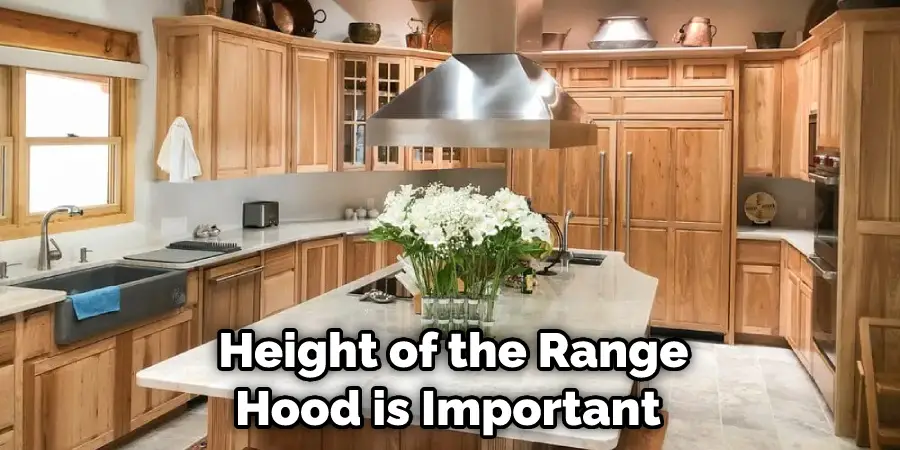
Now, it’s time to install the actual range hood. Carefully lift it into place and use screws or nails to prevent it from falling. It’s important to make sure that your range hood is level before attaching it permanently to avoid any issues with functionality down the line. Make sure that the perimeter of your range hood is sealed tightly before proceeding to the next step.
9. Connect the Duct Work :
If you’re installing a ducted rangehood, you’ll need to connect it to the existing ductwork in your home. If you don’t have any ductwork, you’ll need to hire a professional to install it for you. To connect the rangehood to the ductwork, use screws or clamps to secure the connection. Make sure that all of your joints are flush and that there are no gaps in order to avoid any air leaks.
10 Attach the Range Hood :
Once Your Rangehoods level, use screws to attach it to the ceiling joists or studs for added support. Make sure that all of the screws are tightened securely to avoid any issues with the range hood coming loose. If you’re installing a ducted range hood, you’ll also need to attach the vent cover to the exterior wall.
Things to Consider While Installing Range Hood on Vaulted Ceiling:
The height of the range hood is important. It should be high enough so that it can effectively remove smoke and fumes from the cooking area but not so high that it becomes a nuisance or an obstacle.
The size of the range hood is also important. It should be large enough to cover the entire cooktop but not so large that it dominates the space.
The style of the range hood is a matter of personal preference, but it should complement the overall design of the kitchen.
Range hoods can be vented to the outside or recirculated back into the kitchen. Vented range hoods are more effective at removing smoke and fumes, but they can be noisy. Recirculating range hoods are quieter, but they don’t remove as much smoke and fumes.
Range hoods can be ducted or non-ducted. Ducted range hoods vent to the outside, while non-ducted range hoods recirculate the air back into the kitchen.
Installation is another important consideration. Ducted range hoods require professional installation, while non-ducted range hoods can be installed by the homeowner.
When installing a range hood on a vaulted ceiling, there are a few things to keep in mind. First, the height of the range hood is important. It should be high enough to effectively remove smoke and fumes from the cooking area but not so high that it becomes a nuisance or an obstacle.
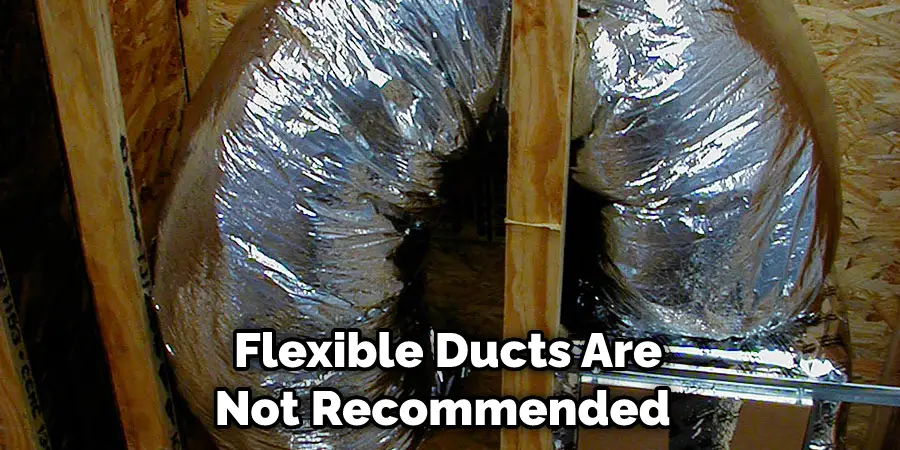
Second, the size of the range hood is also important. It should be large enough to cover the entire cooktop but not so large that it dominates the space. Third, the style of the range hood is a matter of personal preference, but it should complement the overall design of the kitchen.
Is It Ok to Use a Flexible Duct for the Range Hood on Ventilated Ceiling?
Flexible ducts are not recommended for use with range hoods. While they may be easier to install, they are not as effective at removing smoke and fumes from the kitchen.
If you must use a flexible duct, make sure it is rated for use with range hoods and is made of a durable material that will not sag over time. Make sure the duct is also properly supported so that it does not come loose and cause problems.
Can You Install a Range Hood Without a Ventilated Ceiling?
A range hood can be installed without a ventilated ceiling, but it will not be as effective at removing smoke and fumes from the kitchen. Non-vented range hoods rely on the natural draft created by the heat of the stove to draw air up and out of the kitchen.
This can work if the stove is vented to the outside, but it is not as effective as a vented range hood. If you do not have a ventilated ceiling, you may want to consider installing a non-vented range hood or using another type of ventilation system in your kitchen.
Do You Need to Use Professionals?
While it is possible to install a range hood on your own, it is recommended to hire professionals for the job. Installing a range hood involves electrical and potentially ductwork work, which can be dangerous if not done correctly.
Additionally, professionals have the necessary tools and experience to ensure that the installation is done properly and efficiently. Hiring professionals may also ensure that your warranty remains valid in case of any issues with the range hood. So, it is always better to seek professional help when it comes to installing a range hood on your vaulted ceiling.
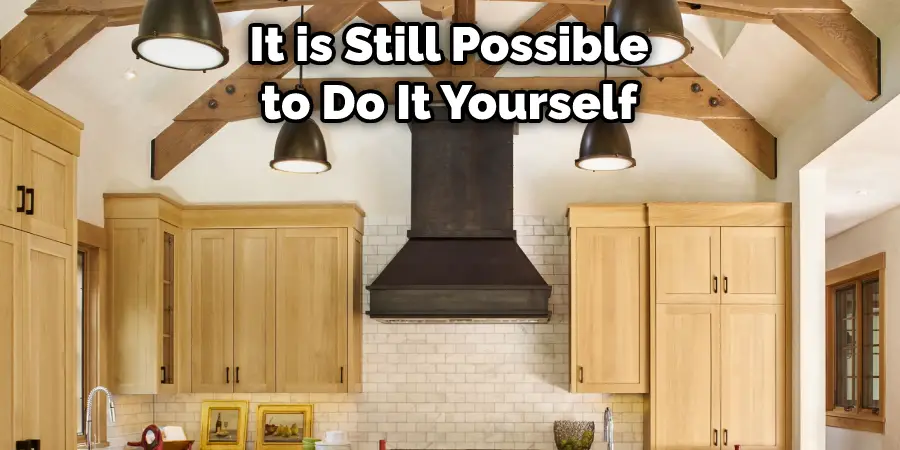
Overall, installing a range hood on a vaulted ceiling requires careful planning and attention to detail. Make sure to consider factors such as height, size, style, and ventilation before beginning the installation process. Hiring professionals to install the range hood may be the best option for ensuring a safe and efficient installation.
Once installed, your range hood will not only improve the functionality of your kitchen but also add an aesthetic touch to the space. So, take your time and choose the right range hood for your vaulted ceiling to make cooking a more enjoyable experience. So, it is always better to seek professional help when it comes to installing a range hood on your vaulted ceiling. The right range hood will not only improve the functionality of your kitchen but also add an aesthetic touch to the space. So, take your time and choose the right one for you!
Frequently Asked Questions:
Q: How Do I Determine the Size of the Range Hood Needed for My Kitchen?
A: To determine the size of the range hood needed for your kitchen, you will need to measure the width of your cooktop. The range hood should be at least as wide as the cooktop, but it can be larger if desired. You should also consider the height of your ceiling and the power of your range hood’s motor to ensure it can effectively remove smoke and fumes.
Q: How Do I Clean My Range Hood?
A: To clean your range hood, you should first turn off the power to it. Then, remove any filters or covers and wash them with warm soapy water. You can also use a degreaser if necessary. Wipe down the exterior of the range hood with a damp cloth and dry it thoroughly. Finally, replace any filters or covers and turn the power back on.
Q: How Often Should I Change My Range Hood Filter?
A: The frequency at which you should change your range hood filter depends on how often you cook and what type of cooking you do. In general, it is recommended to change the filter every 3-6 months for heavy use and every 6-12 months for light use. You may need to change the filter more frequently if you cook with a lot of grease or have a non-vented range hood.
Q: Can I Install a Range Hood Myself?
A: It is possible to install a range hood yourself if you have experience with electrical and carpentry work. However, it is recommended to hire a professional for ducted range hoods as they require proper venting to the outside. Non-ducted range hoods can be installed by homeowners, but it is important to carefully follow the manufacturer’s instructions.
Q: What Should I Do If My Range Hood Is Not Working Properly?
A: If your range hood is not working properly, first check to make sure it is plugged in and the circuit breaker has not tripped. If everything seems to be in order, there may be an issue with the motor or wiring that will require professional repair. It is important to address any malfunctions as soon as possible to ensure the safety and effectiveness of your range hood. Ultimately, proper installation and maintenance are essential for a functional and efficient range hood on a vaulted ceiling.
Conclusion:
Even though a range hood installation on a vaulted ceiling is more complicated than installing one on a standard ceiling, it is still possible to do it yourself. Follow the instructions and tips given in this article, and you will be able to install your range hood correctly and securely.
If you want to install a range hood on your vaulted ceiling, make sure to follow the tips we outlined in this blog post on how to install range hood on vaulted ceiling. By doing so, you’ll be able to ensure that your kitchen is properly ventilated and that your range hood looks great, too!
You Can Check It Out Remove Kitchen Soffit
Professional Focus
Angela Ervin, a former interior designer turned blogger, specializes in kitchen design and renovations. Through her website, she blends her passion for cooking with design expertise, sharing practical and creative ideas. Known for balancing functionality and beauty, Angela’s insightful content has made her a trusted voice in home design and lifestyle.
About the Author
Angela Ervin, an experienced interior designer and blogger, combines her passion for kitchen renovations with storytelling. Living in Petersburg with her family, she enjoys cooking and testing her projects firsthand. Known for her humor and relatable style, Angela shares creative, functional design insights through her content, making her a trusted voice in home design.
Education History
University: Virginia Commonwealth University
Degree: Bachelor of Fine Arts (BFA) in Interior Design
- Angela’s education at VCU focused on mastering core interior design principles, including spatial planning, color theory, materials selection, and sustainable design practices.
- She gained hands-on experience through studio projects and collaborative design exercises, which honed her ability to create functional and aesthetically pleasing environments.
- Her coursework also emphasized problem-solving and practical applications of design, preparing her for real-world projects like her self-directed kitchen renovations.
- The program’s strong foundation in both technical skills and creative expression shaped Angela’s ability to seamlessly integrate form and function in her work.


